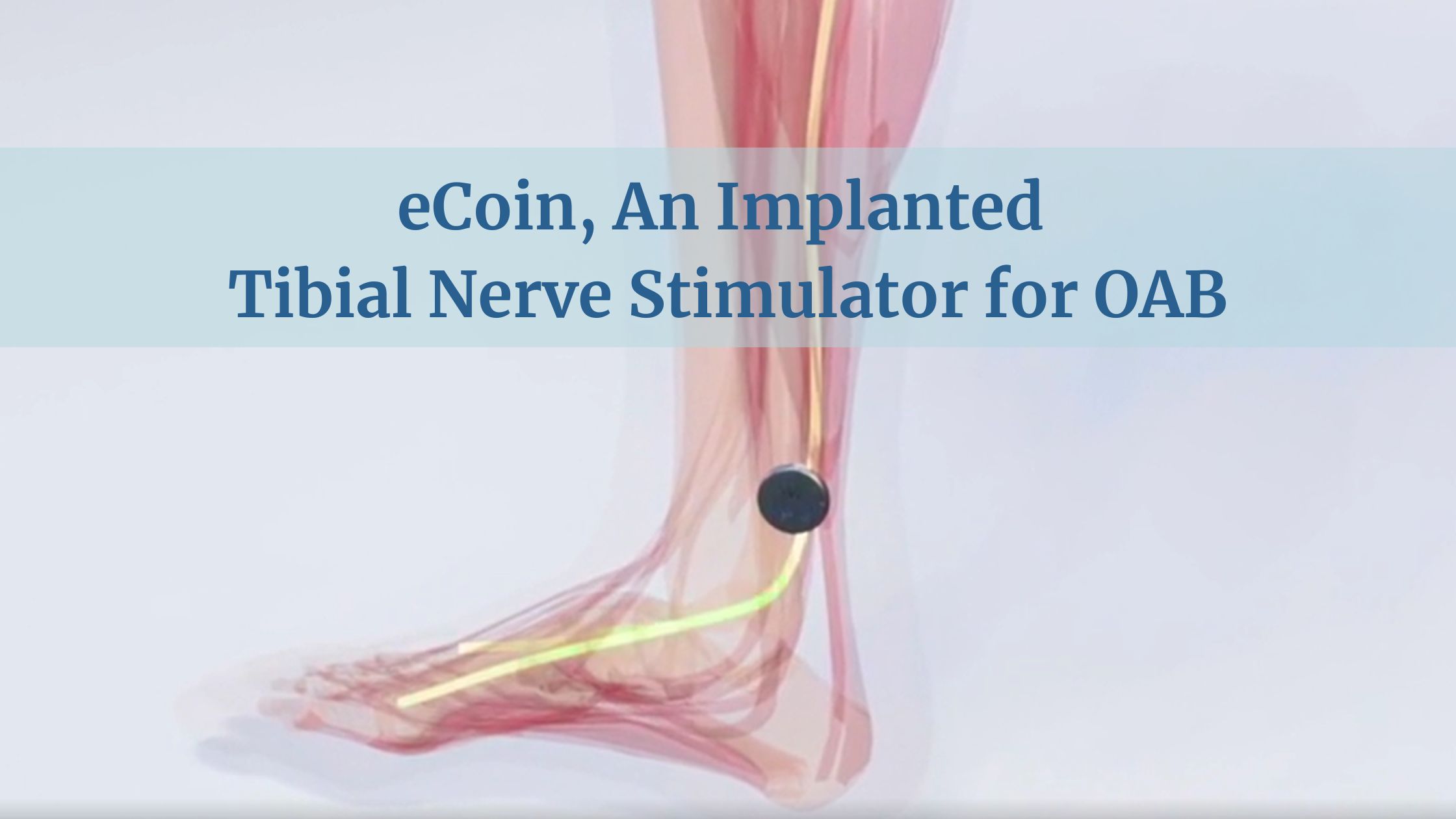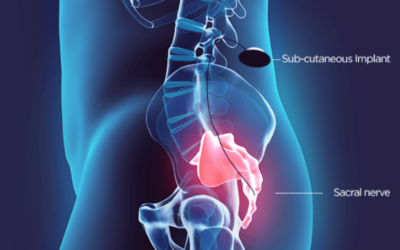eCoin
In my last post, I discussed percutaneous tibial nerve stimulation, or PTNS. This is an office procedure that treats overactive bladder. The tibial nerve is stimulated with a small electric current for 30 minutes once a week. This is repeated for 12 weeks. PTNS is an effective treatment with few side effects. But it is time-consuming. There are also maintenance treatments that are performed in the office. To have PTNS, there has to be a provider close to you that offers this treatment. And some insurances will not pay for the treatment indefinitely, only for a defined period of time. Because of these limitations, various companies are creating implantable tibial nerve stimulators.
An implanted tibial nerve stimulator will stimulate the nerve away from an office setting. This requires a procedure but would remove all of the time and travel inconveniences associated with PTNS. Right now, there is one such stimulator on the market. And at least three more companies have ongoing trials investigating the efficacy of their stimulators.
What is an eCoin?
eCoin (ecoin.us) is an implantable tibial nerve stimulator that Valencia Technologies developed. This is an FDA-approved device for overactive bladder and urgency urinary incontinence. The device is about the size of a nickel and has a battery and stimulator. It is placed in the ankle under the skin with a short, outpatient surgery with local anesthesia. This device will last 3-5 years and then need to be replaced.
Because this is a new device, there haven’t been many implanted. There has been research done on the device. These studies show that it works in about 75% of women. Around half of these women are totally dry, and the rest are improved. And 89% of the women with eCoin would recommend the device to friends and family. This is one of the best ways we have to evaluate satisfaction. No one recommends things they don’t like.
eCoin is a good treatment option, but there are a few things to consider.
- You have to have good circulation
- You can’t have any numbness or nerve issues in your legs
- You can’t have varicose veins
- You can’t be prone to infections
- You can’t be pregnant
- You can’t have a history of ankle trauma or surgery (like a fractured ankle and surgery)
Once the device is implanted, there are some strict guidelines and restrictions for healing. You have to wear a surgical dressing for two weeks. A special compression sock is required to be worn for four weeks. And you are not allowed to run or bike for eight weeks. Plus, the device is not turned on until the wound is healed. The earliest it is turned on is four weeks after the procedure.
New technologies.
I like the idea of this device, but it is also important to be cautious when approaching new technologies. No one has performed many of these procedures. Research studies are great, but we always learn more when work moves from the research arena to the real world.
There is careful training before a surgeon performs a new procedure. There are required online classes, in-person lectures, and anatomy labs. The first cases are always performed with an experienced second surgeon. It is as safe as possible. But it is different than having a procedure the surgeon has performed countless times.
You learn things as you move forward, like who is a good candidate for the procedure. You may not want to be an “early adapter” but may want to wait until more have been performed. I know that when I am doing something new, I always make sure my patient knows where I am on my learning curve.
Additional versions
At least three more companies are working on versions of the implantable tibial nerve stimulator. They’ll differ in how they work, but the companies aren’t discussing the details yet. I know there is another version with an implant and an external control unit. The device will only stimulate the nerve when the external control unit is on. This unit is to be worn six times per week for 30 minutes. This is very different than the eCoin, which does not have an external control unit.
One of these stimulators will end up being better than the others. One might last longer than the others. Three to five years might sound great, but it isn’t that long when you consider that it takes surgery to replace the battery. I like the idea of an implantable stimulator better than wearing an external control unit. But I also like the idea of stimulating the nerve when I want it to be. With the eCoin, the nerve is stimulated at scheduled times, and you can’t change it. What if it happens when you’re at the store? Can you feel it? Is it annoying? We’re all wired differently, so the answers to these questions will differ from person to person. And we still need to get this practical knowledge.
The implantable tibial nerve stimulator is a great idea for women who have had success with PTNS but are tired of coming to the office. An implantable should work well for them. I have many patients who want to try this technology even though they know it is new. The procedure to place the device is very straightforward. I think the implantable tibial stimulators will help many women. And each new innovation for bladder leaking helps me cure more women.

Rogers A J Urol 2021






0 Comments